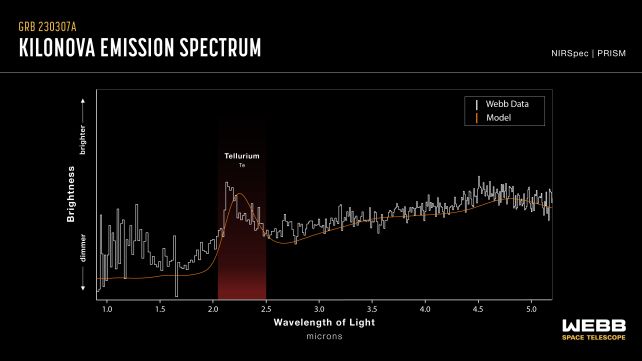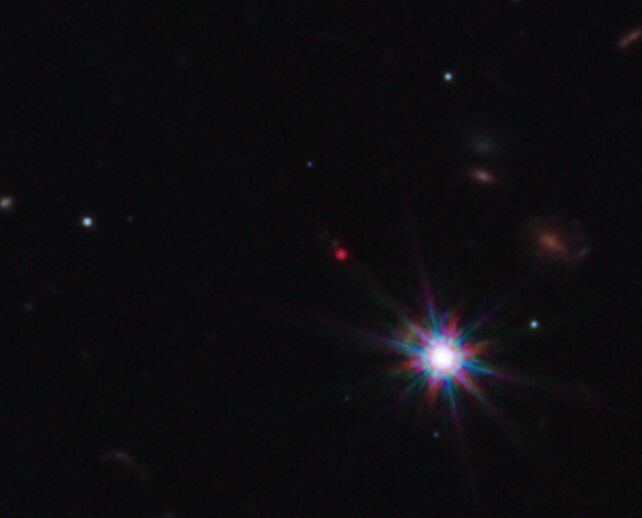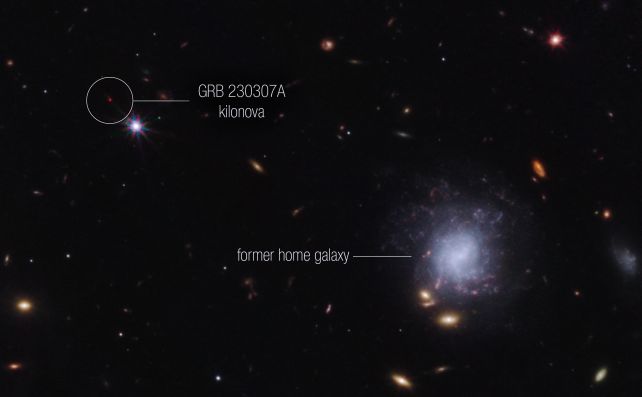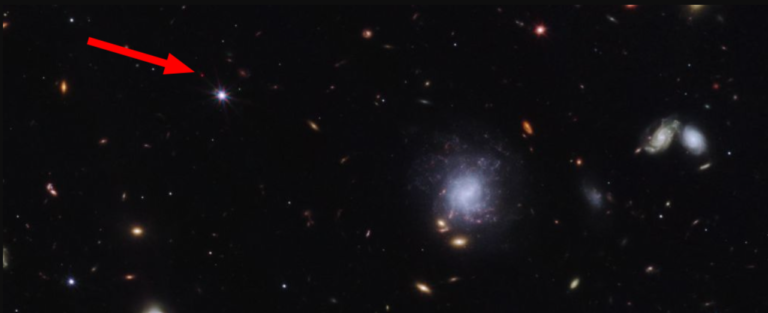First Neutron Star Collision Observed Producing Heavy Metals with JWST
When two neutron stars collided a billion light-years away, the resulting kilonova explosion unveiled itself as a unique forge for rare heavy elements. This marked the inaugural occasion that the James Webb Space Telescope ventured into the study of such an event. Following a colossal gamma-ray burst that occurred on March 7, 2023, the telescope’s data disclosed the presence of tellurium, an exceptionally heavy metal that cannot be formed through stellar fusion within star cores.
Moreover, indications of other heavy metals, such as tungsten and selenium, were also suggested. This discovery validates the role of neutron star mergers as a prominent source of heavy elements, thereby contributing significantly to our comprehension of how the Universe generates and disperses materials throughout space.
Astrophysicist Andrew Levan from Radboud University, who led the investigation, emphasized the significance of this moment: ‘With only a scant number of known kilonovas, this marks the first opportunity to scrutinize the aftermath of such an event through the lens of the James Webb Space Telescope.’ He further notes, ‘More than 150 years after Dmitri Mendeleev established the periodic table of elements, we are now at a juncture where we can begin to elucidate the remaining mysteries surrounding the origins of these fundamental building blocks of our world.

Stars are truly remarkable celestial entities. They engage in a fascinating alchemical process where they repeatedly fuse hydrogen atoms, the predominant constituent of the visible universe, into progressively heavier elements, transitioning from hydrogen to helium and ultimately creating even more complex elements, including iron.
However, this is where stars encounter a formidable limit. The fusion of iron into more massive elements necessitates a greater input of energy than it generates, which ultimately propels the star towards a cataclysmic explosion due to the overwhelming force of its gravitational collapse.
Interestingly, this explosive event also serves as a crucible for a sequence of nuclear reactions. In these reactions, atomic nuclei interact with free neutrons to form even more massive elements. The key is that these reactions must unfold rapidly, preventing the occurrence of radioactive decay before additional neutrons can be incorporated into the nucleus. This condition is met in environments rich in free neutrons, such as those found in supernovae or kilonovae. This specific process of nucleosynthesis is known as the rapid neutron capture process, or the r-process.
In 2017, the groundbreaking observation of two neutron stars colliding for the first time provided concrete evidence that kilonovae are responsible for producing r-process elements. Scientists detected the presence of strontium, the 38th element on the periodic table, in the aftermath of this extraordinary cosmic event.

In March of this year, a gamma-ray burst designated as GRB230307A illuminated the skies, prompting immediate attention from scientists. This cosmic event, known as GRB230307A, was a truly remarkable spectacle, ranking among the most brilliant gamma-ray bursts ever recorded. It shone with a radiance 1,000 times more intense than the typical gamma-ray burst and over a million times brighter than the entire Milky Way Galaxy.
What made GRB230307A even more intriguing was its exceptionally extended duration, lasting for approximately 200 seconds. This prolonged burst was indicative of a kilonova, as opposed to the much shorter bursts associated with supernova gamma-ray bursts. A multitude of observations across different wavelengths corroborated this assessment, aligning with the characteristic profile of a kilonova origin.
Given that kilonovae are established sources of r-process elements, astronomers expressed a keen interest in examining the source of this explosion using the infrared capabilities of the James Webb Space Telescope (JWST). On April 5th, they directed the telescope towards the radiant aftermath, which had developed a notable infrared component, and collected spectral data.
This data divulged the presence of tellurium, the 52nd element in the periodic table, a substantial finding in itself. This suggests the likelihood of other r-process elements within the expanding debris from the collision of neutron stars. Nevertheless, further observations will be necessary to affirm this hypothesis.

It’s worth emphasizing that the explosion occurred in an exceedingly unusual location: intergalactic space, situated 120,000 light-years distant from the closest galaxy. The scientists postulated that the galaxy likely served as the birthplace for the two neutron stars, which originally formed as massive, conventional stars. At some point in the distant past, these stars underwent supernova events, one after the other. The sheer force of these explosions provided the impetus to eject them from the galaxy.
This extraordinary occurrence holds the promise of unveiling a wealth of additional insights, as affirmed by the researchers themselves. As astronomer Ben Gompertz from the University of Birmingham in the UK pointed out, “Until recently, it was thought that mergers could only fuel gamma-ray bursts for a very short duration, not exceeding a couple of seconds. Our next endeavor is to identify more instances of these prolonged mergers and enhance our understanding of the driving mechanisms behind them. Additionally, we aim to investigate whether even more massive elements are being synthesized. This revelation has ushered us into a new era of comprehension regarding the universe and its intricate workings.”
The research has been published in Nature.
This article is republished from ScienceAlert under a Creative Commons license. Read the original article.
Do not forget to share your opinion with us to provide you with the best posts !




0 Comments